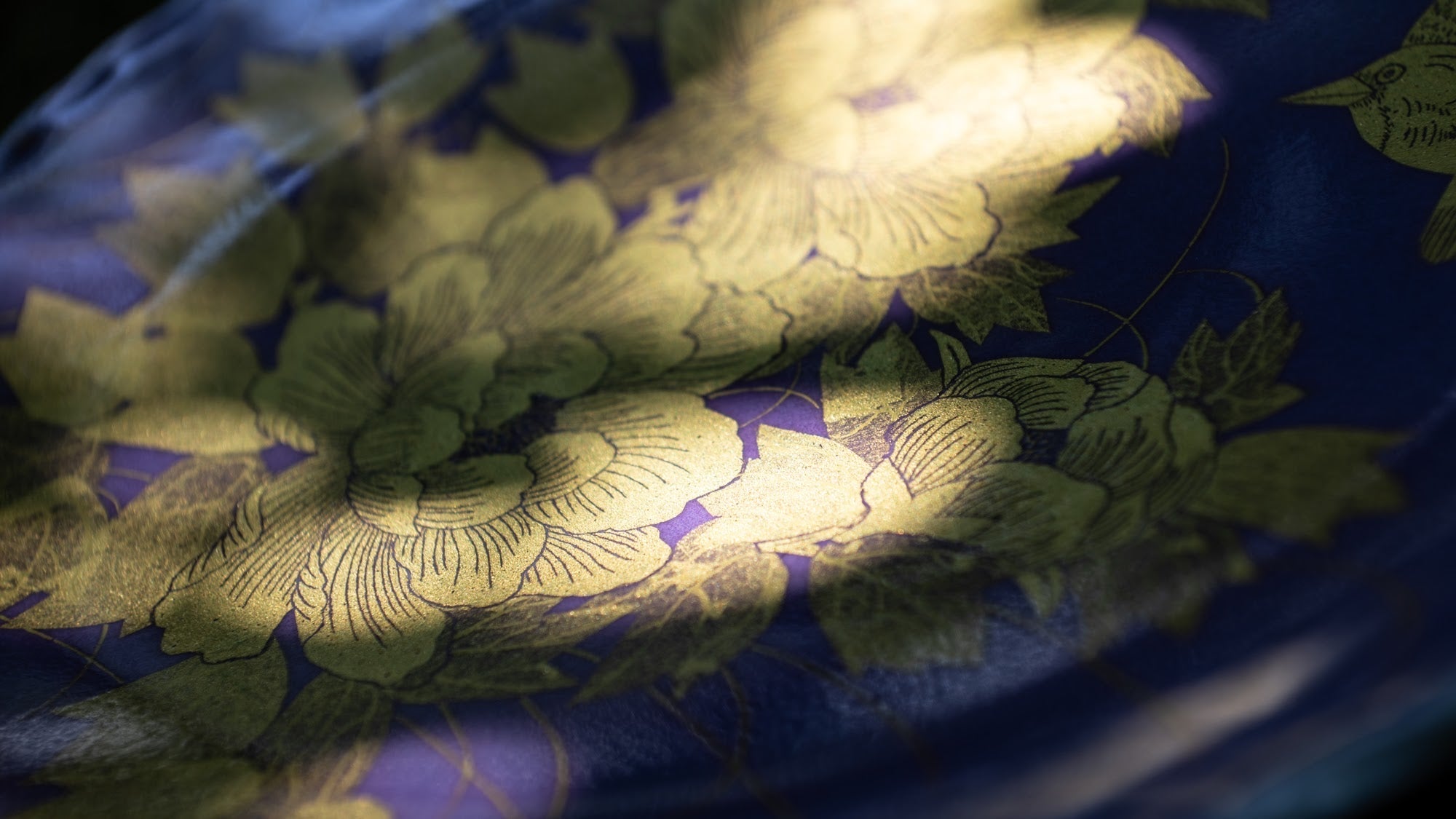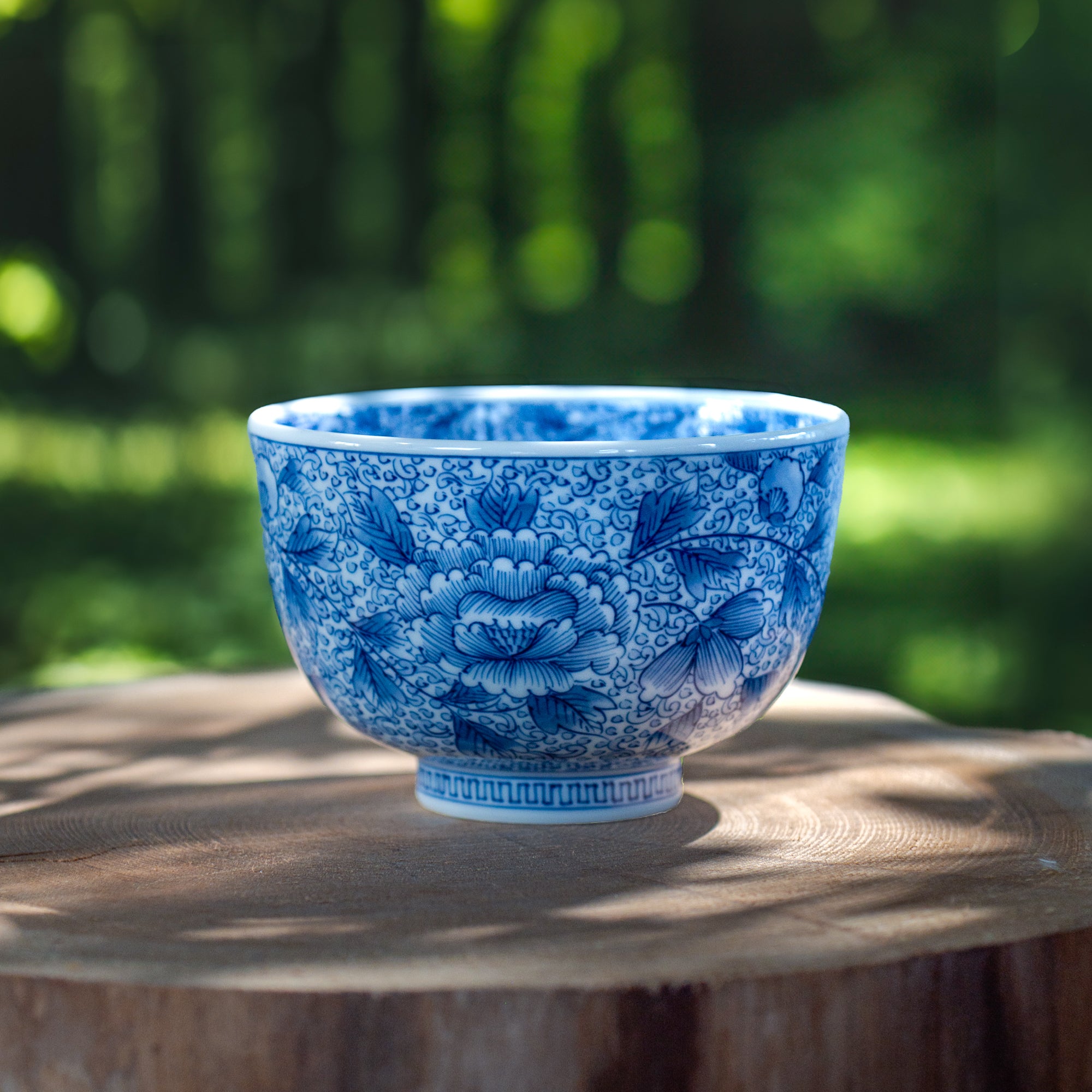
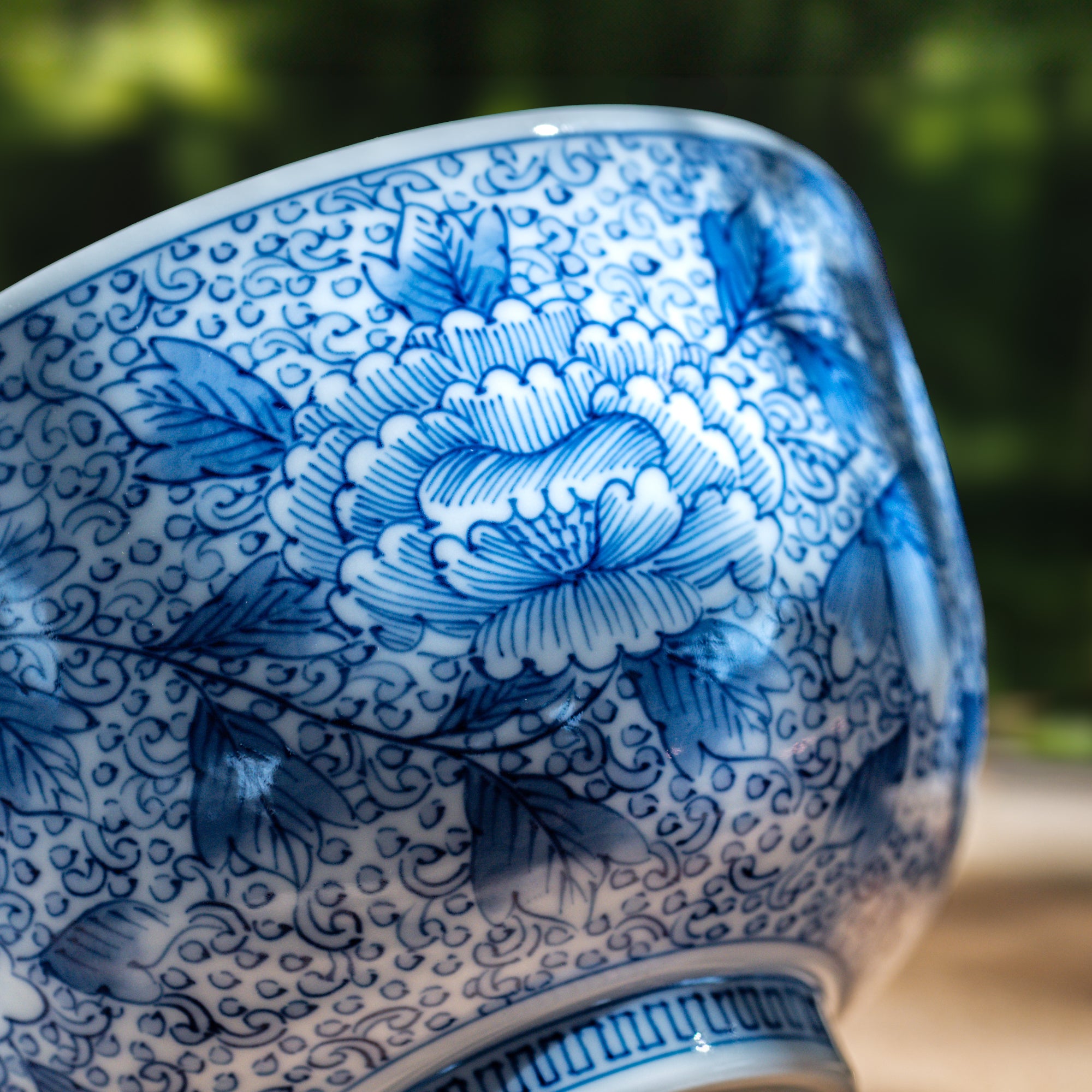
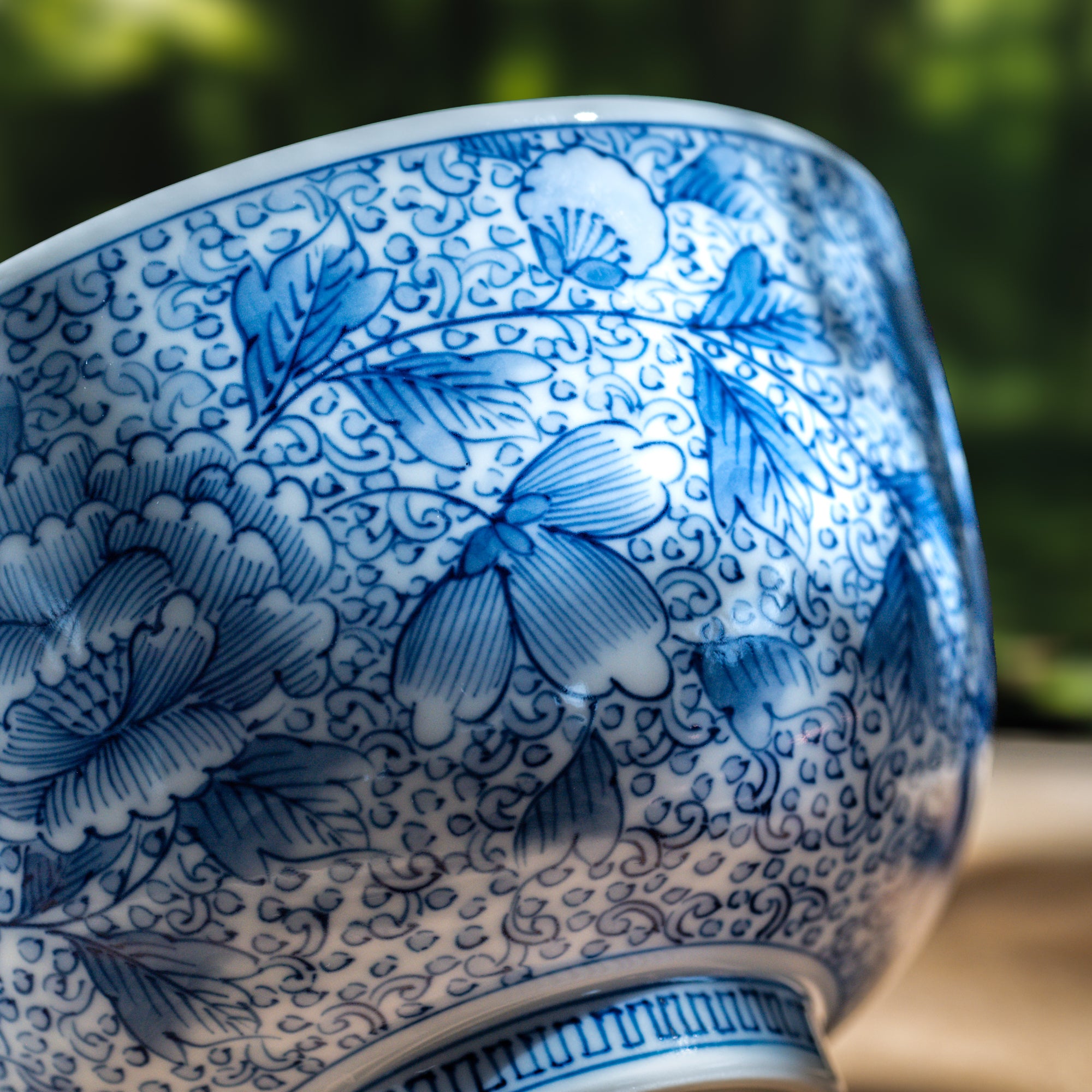
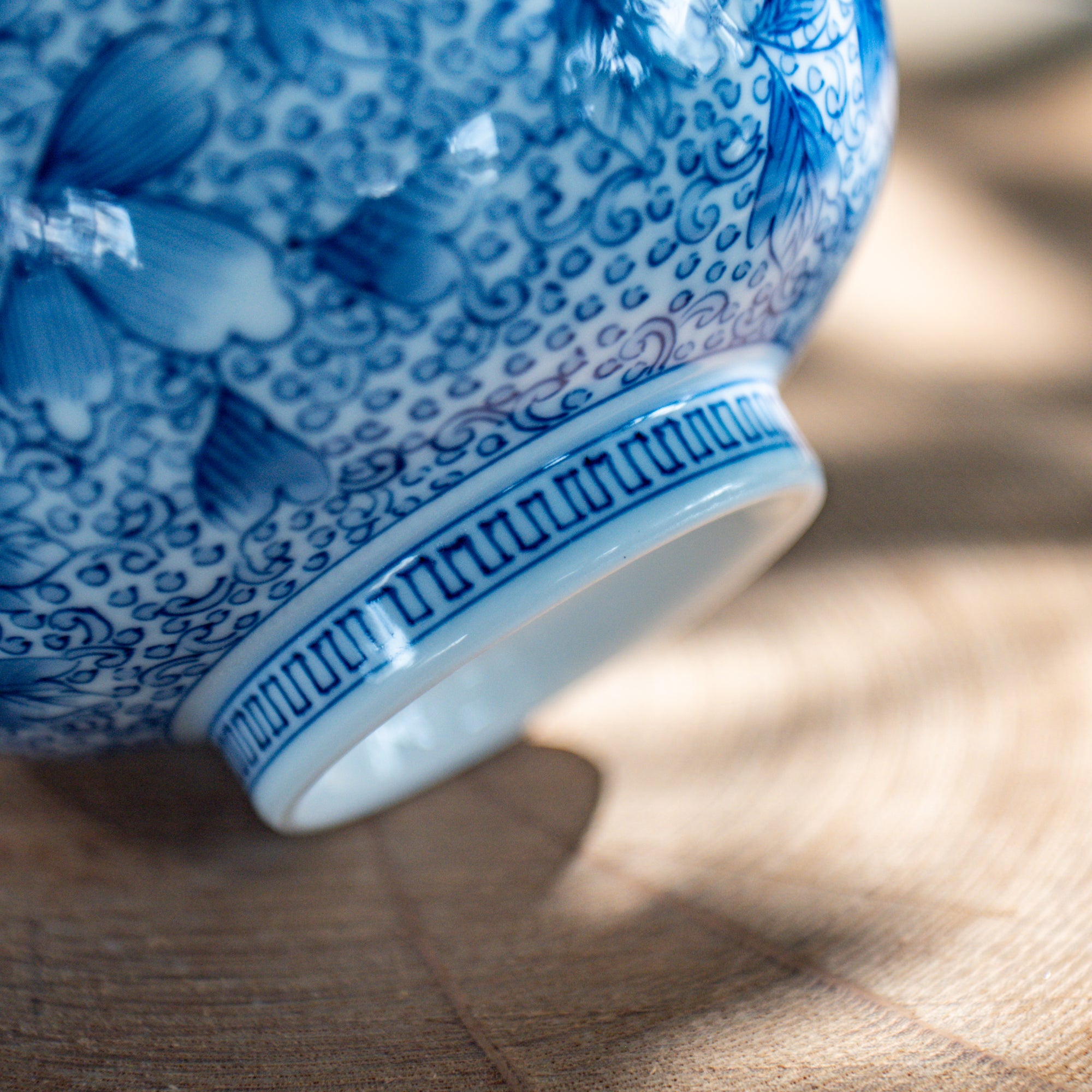
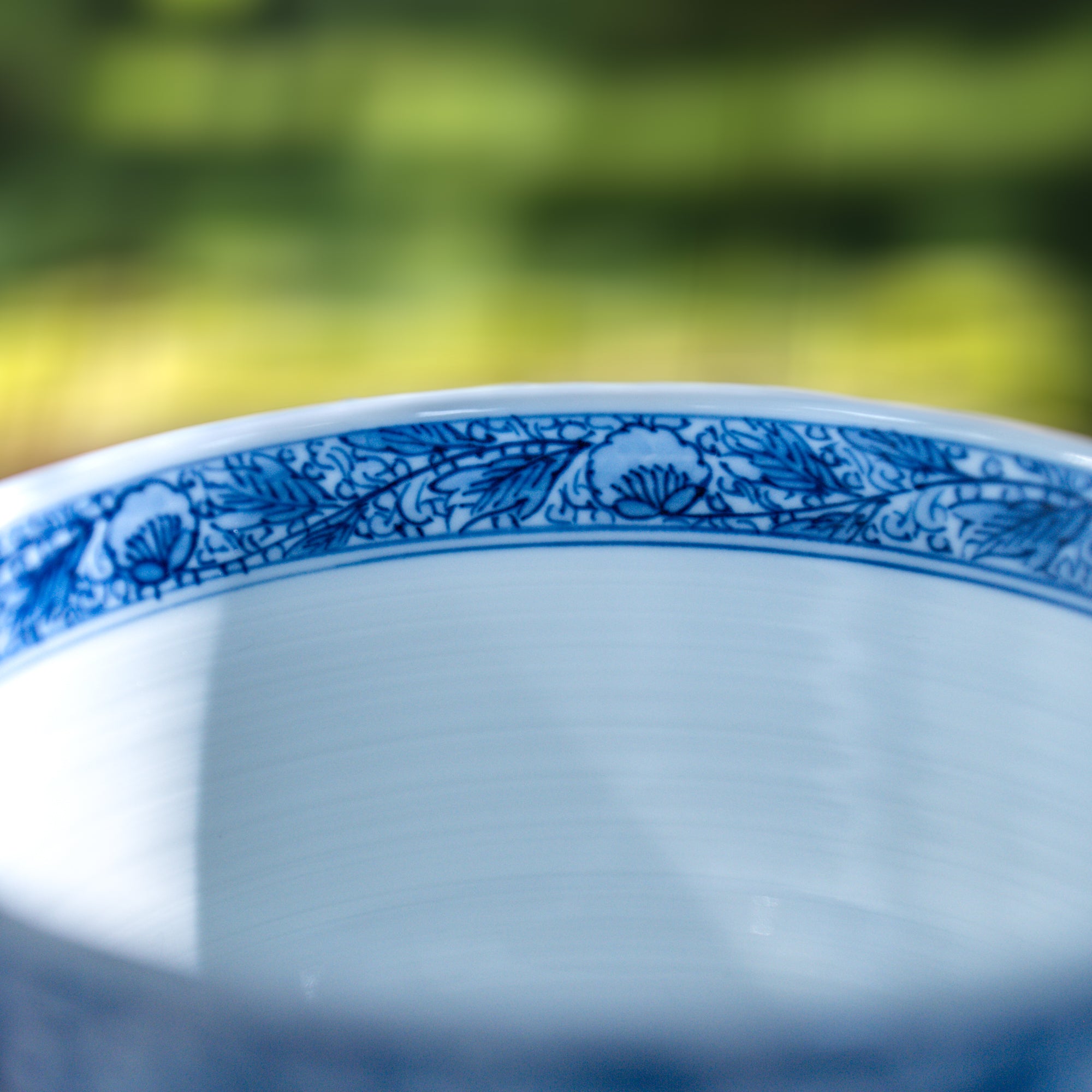
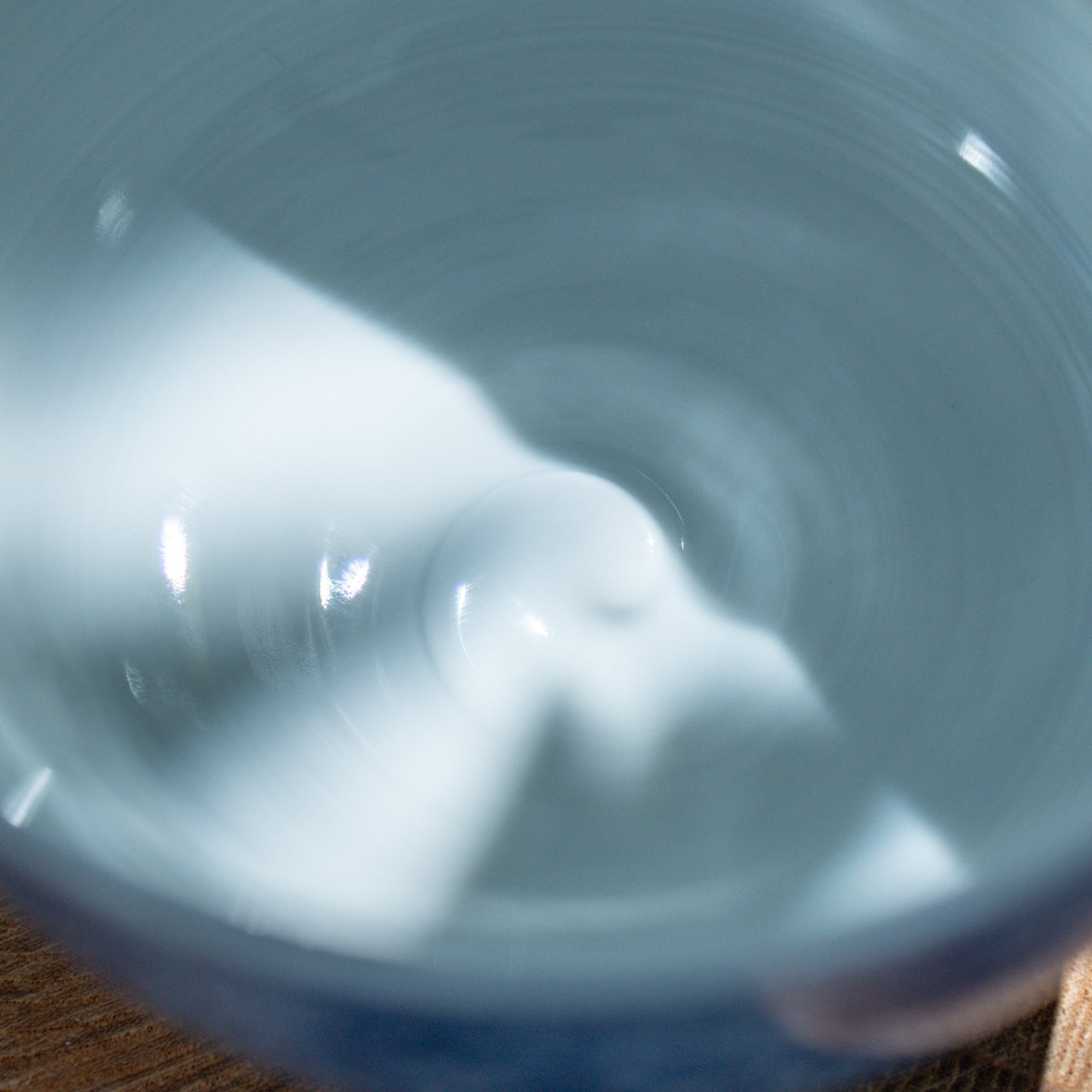
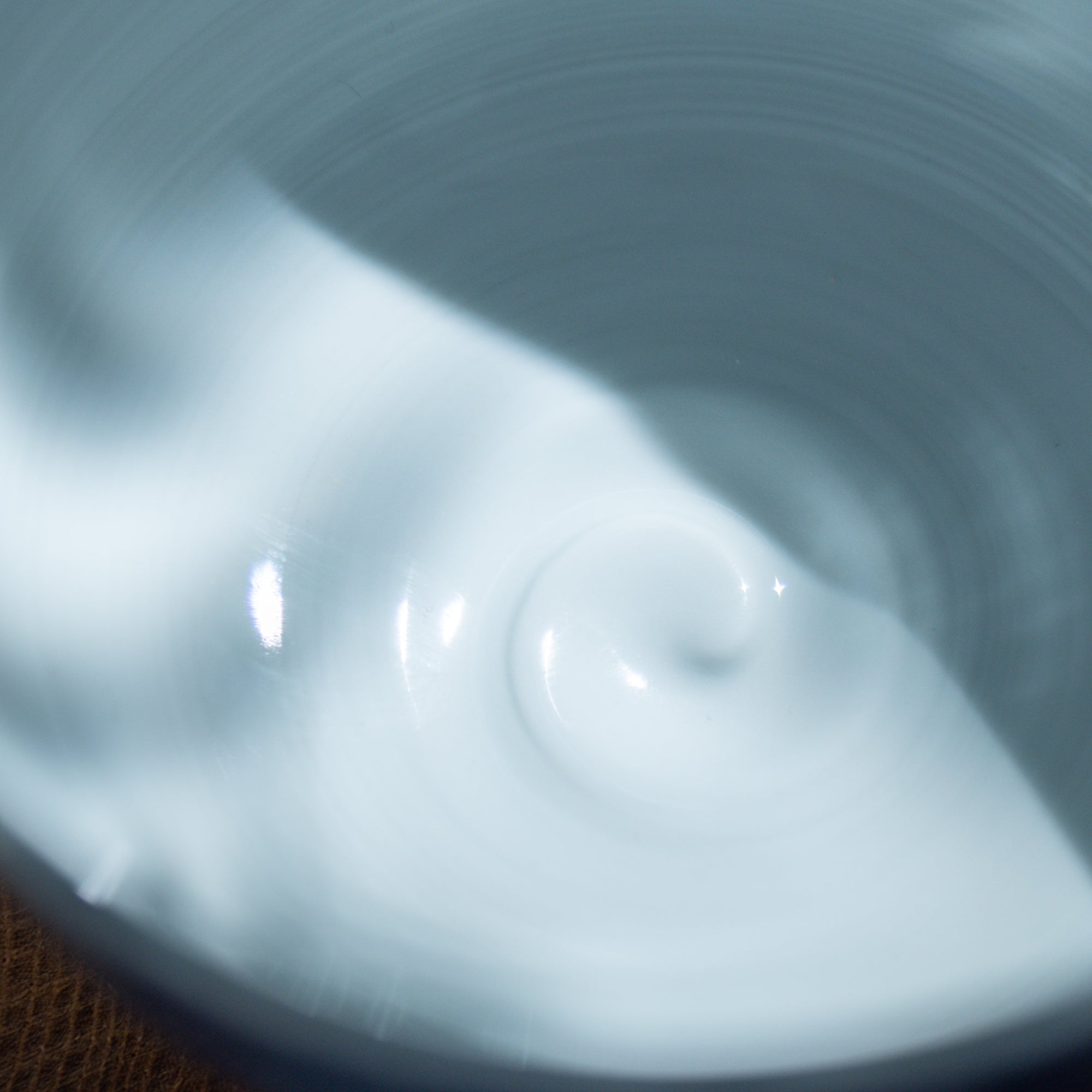
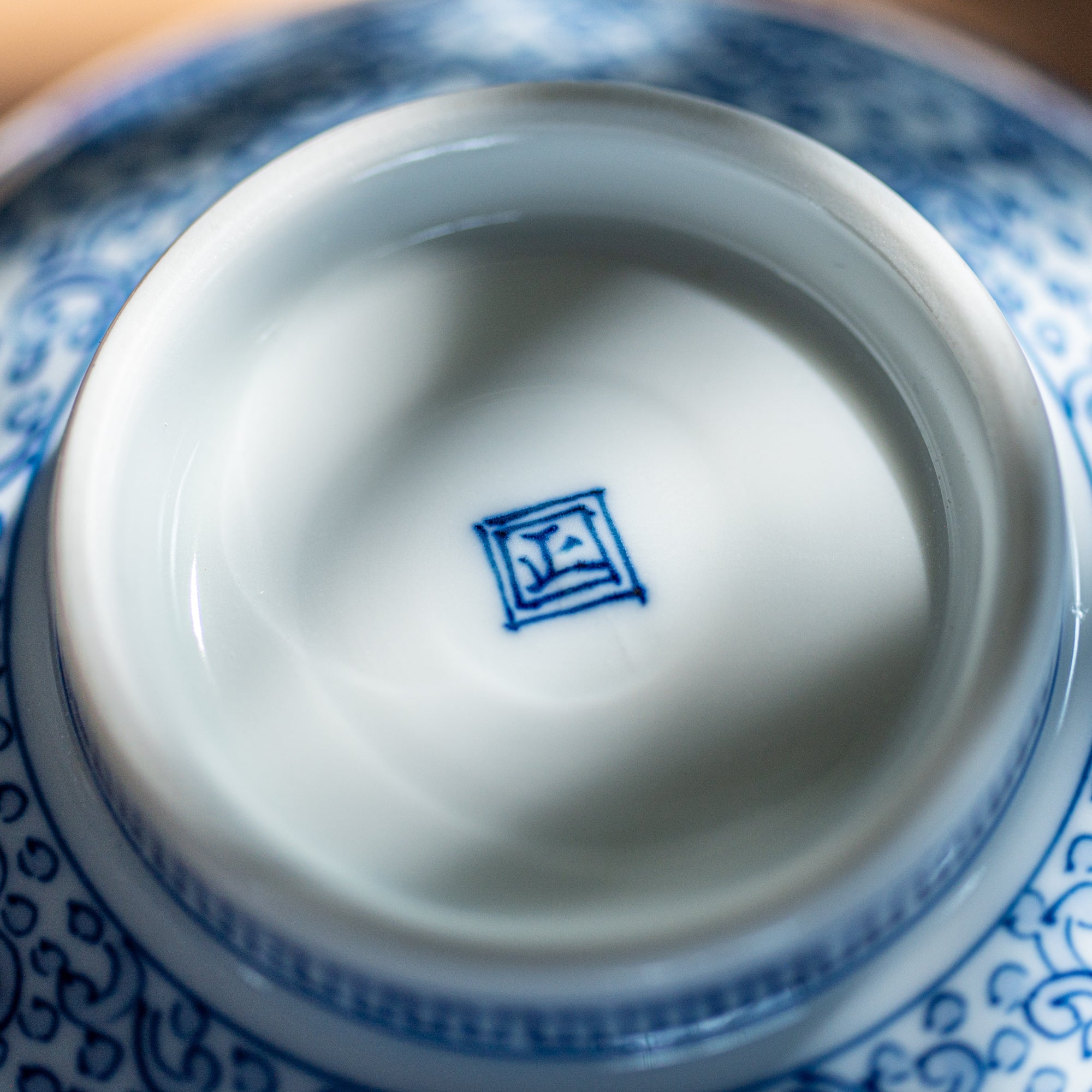
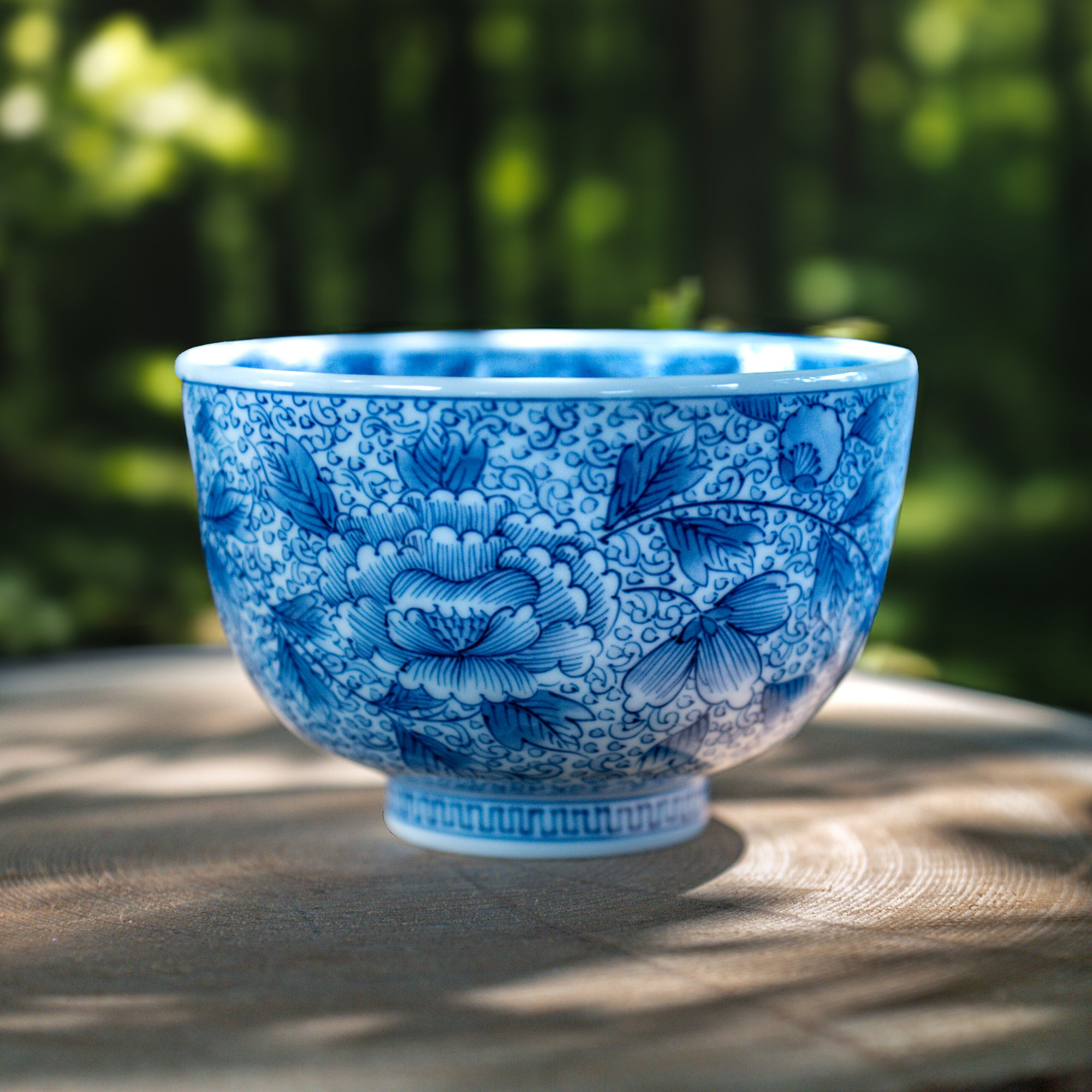

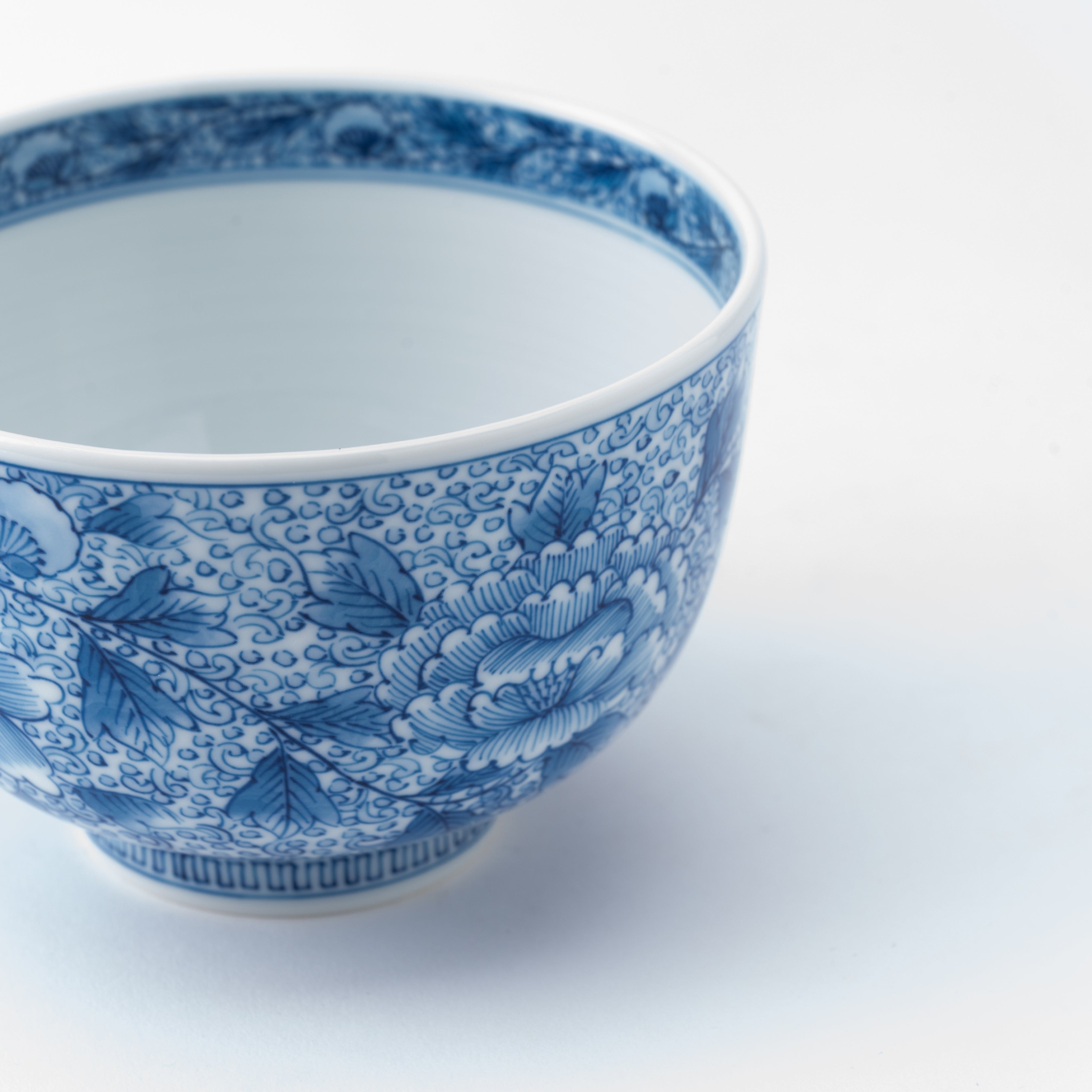
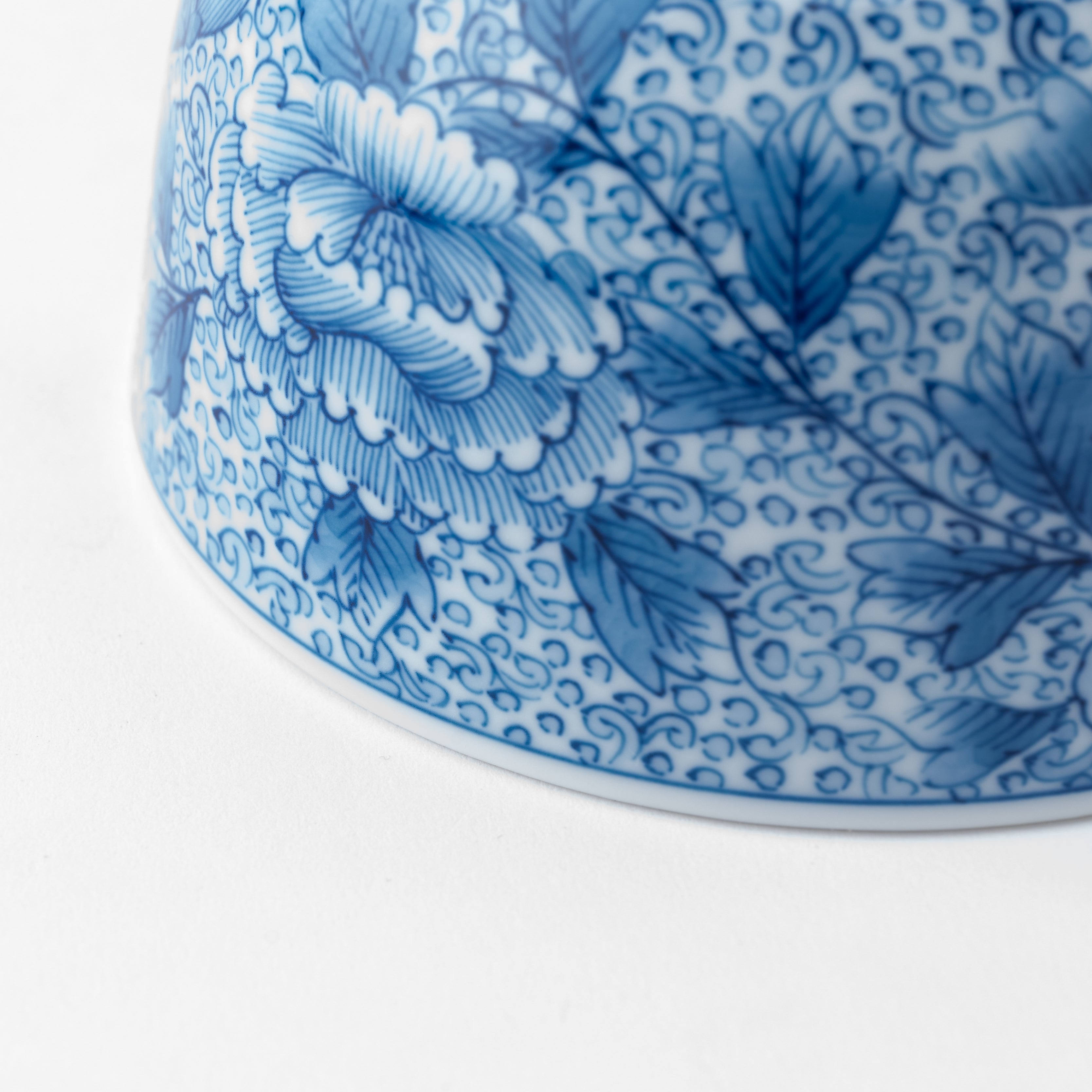
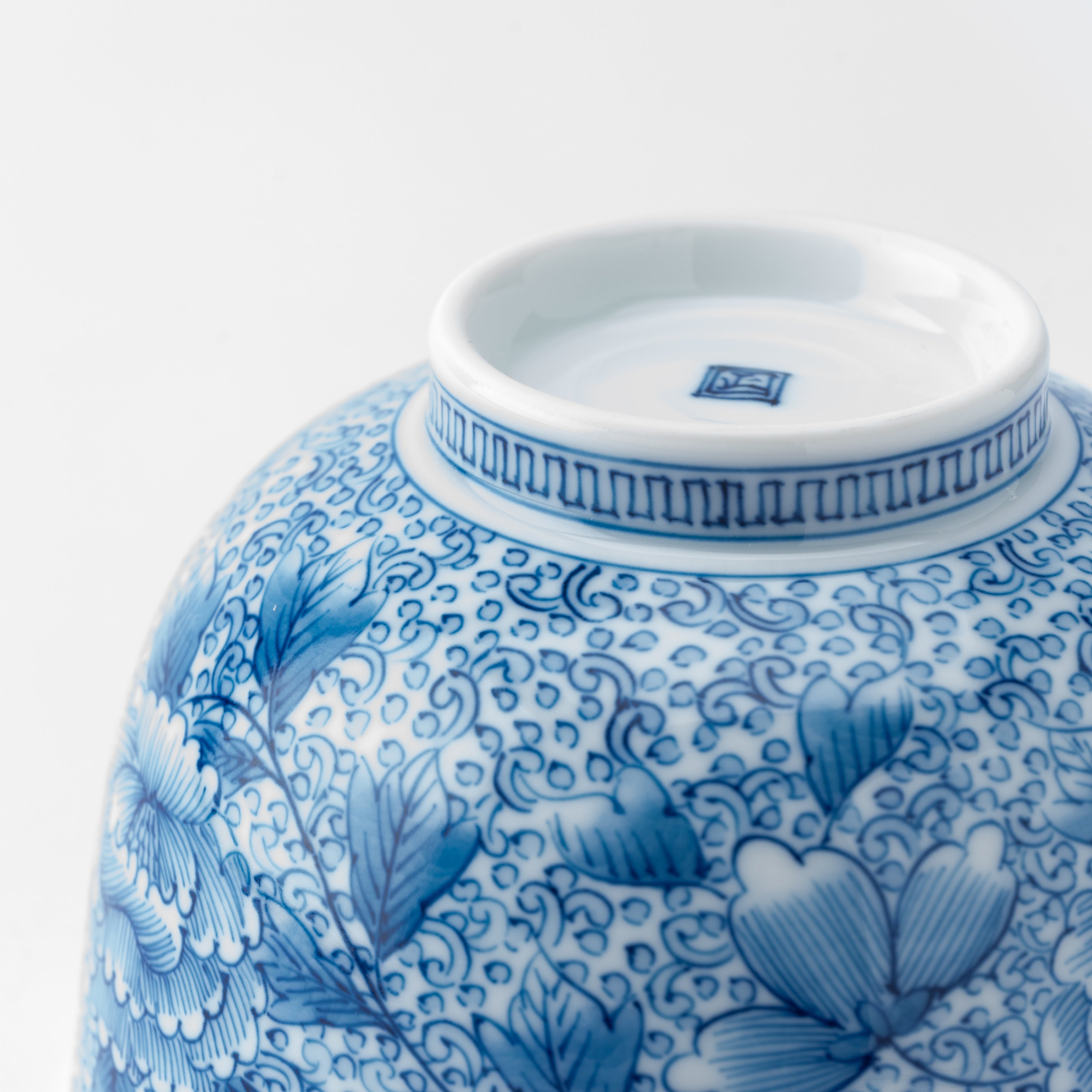
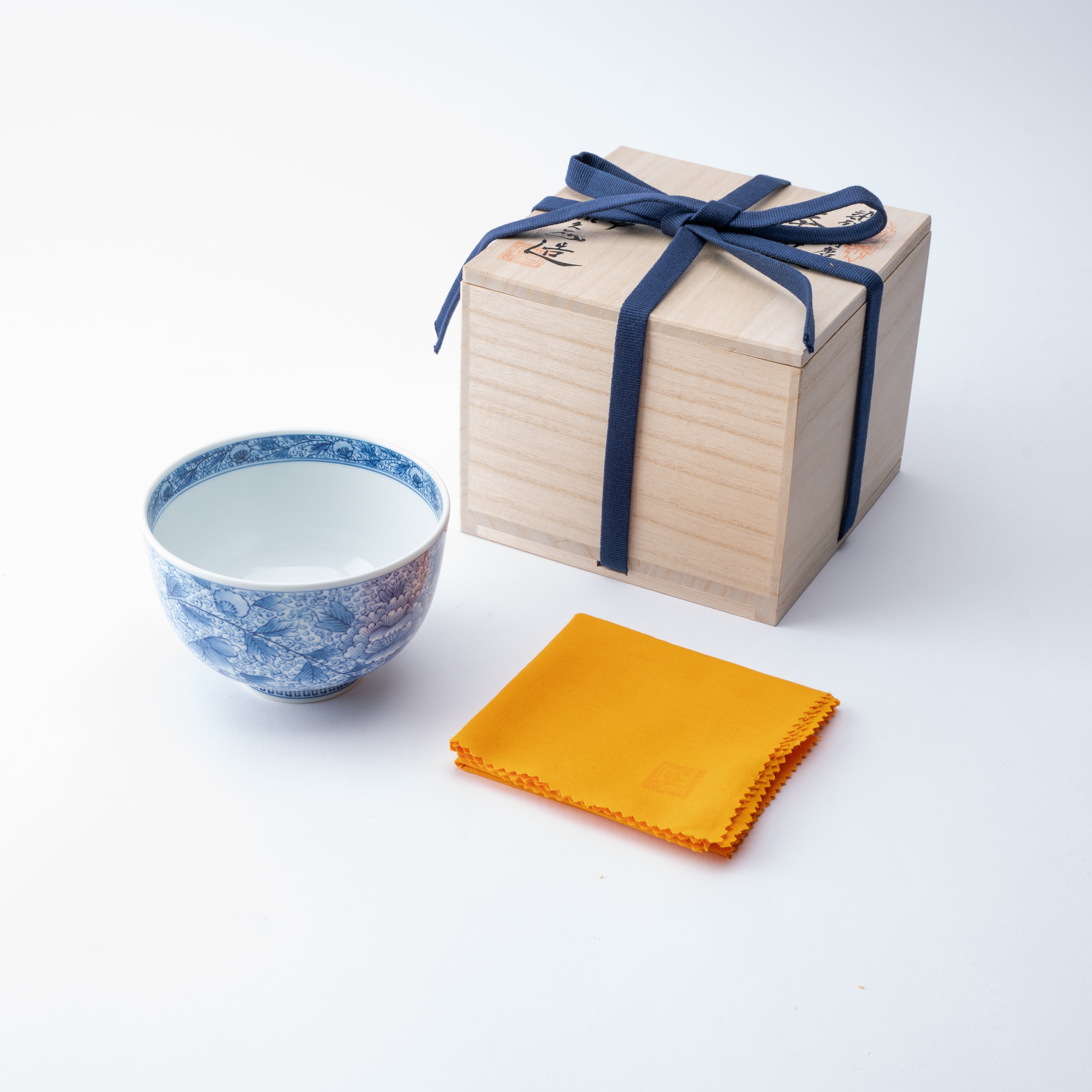
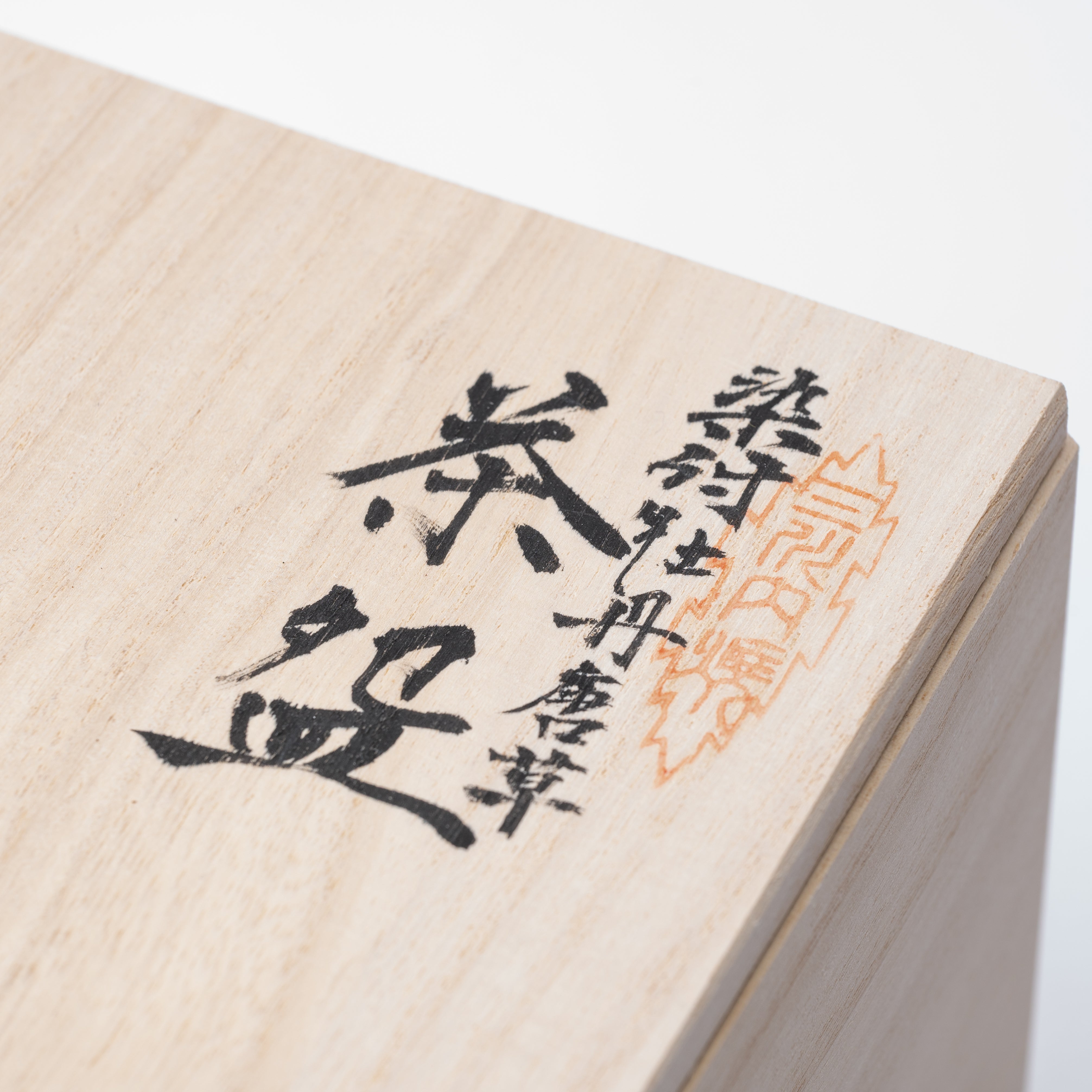
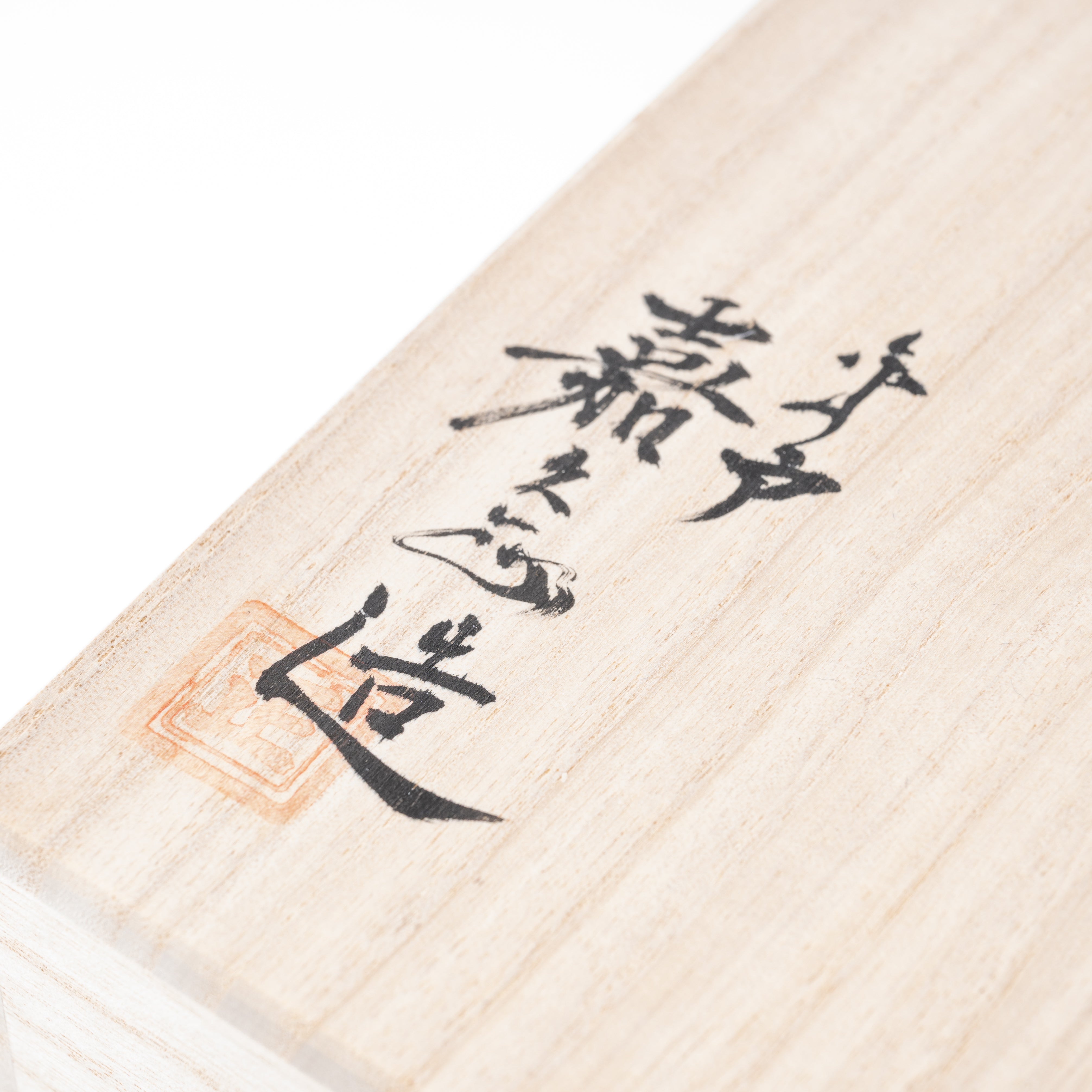
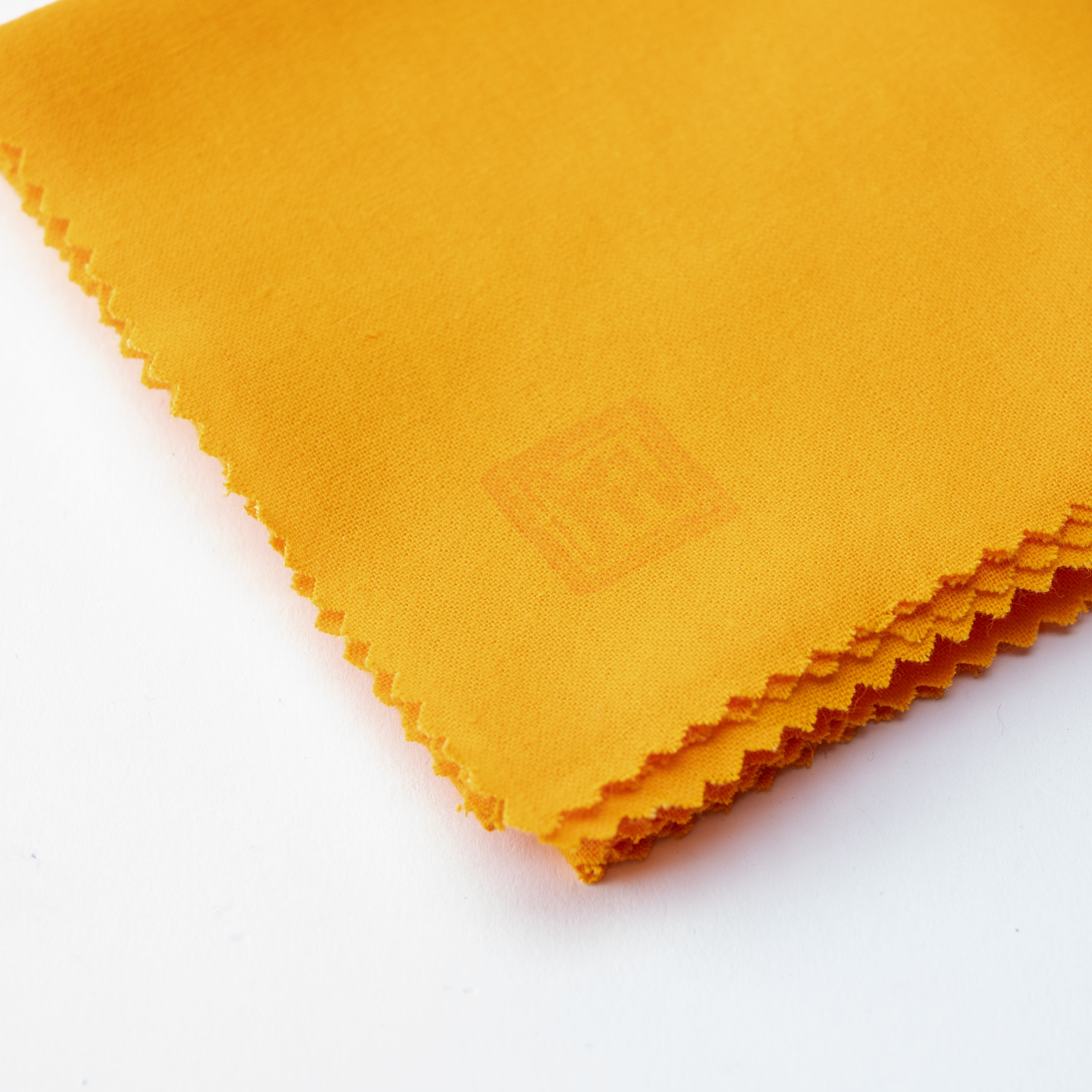
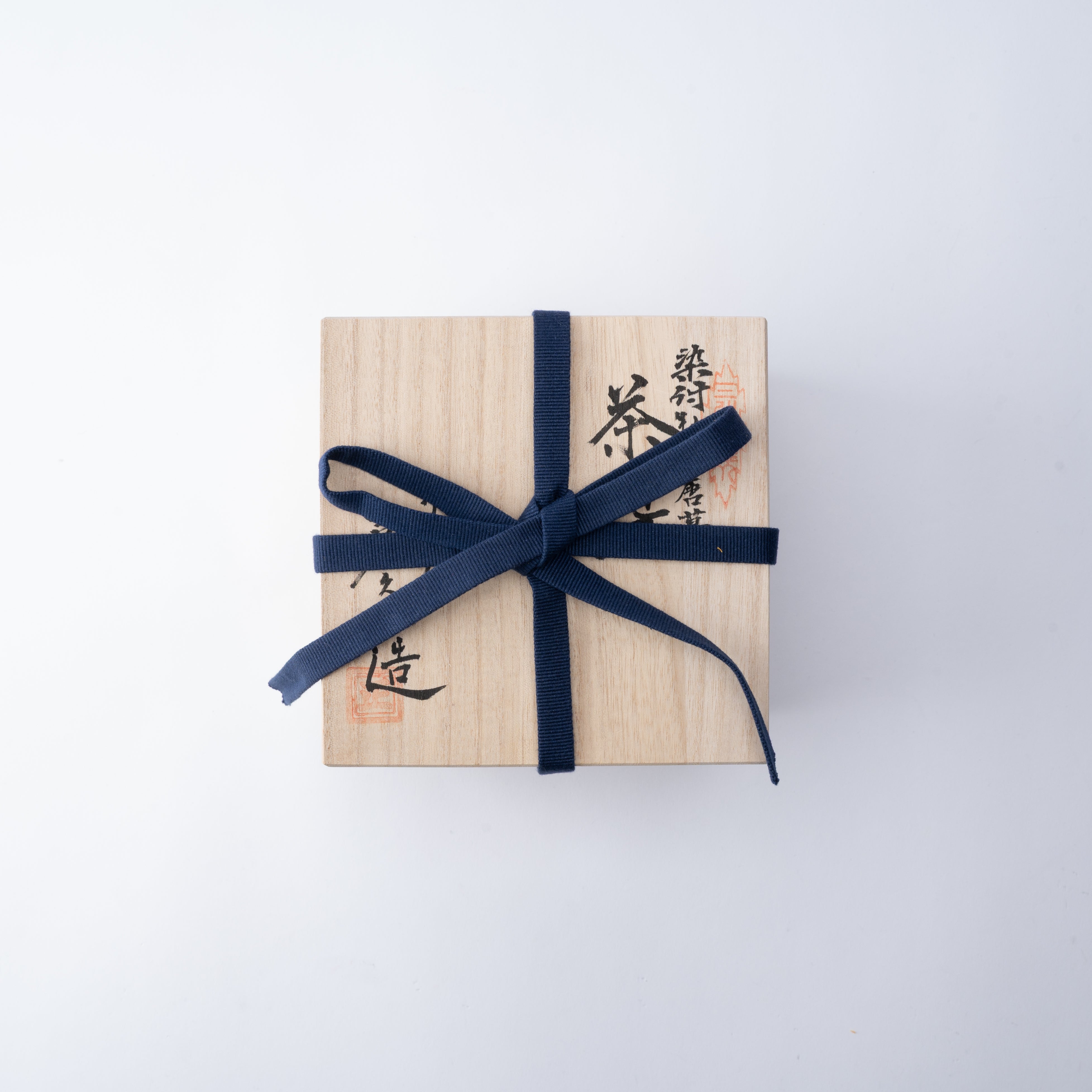
Matcha-Schale mit Pfingstrosen-Arabeskenmuster
Diese detailreiche Matcha-Schale ist das Meisterwerk der Künstlerin Satomi Toshitaka. Mit gosu– ein Indigopigment, das in der Kunst des Sometsuke– trägt er seine fachmännische Hand mit einem Pinsel, so fein wie ein einzelnes Haar, auf die durchscheinende weiße Leinwand der Mikawachi-Ware auf. Das Ergebnis ist ein Gefäß, das eine betörende Sinn von Tradition und Ruhe.
Satomi verwendet für die Herstellung dieser Matcha-Schale die berühmte Sometsuke-Unterglasurmethode. Auf einen gebrannt grundierten Untergrund malt er die Motive sorgfältig in dünnen, glatten Linien. Dieser grundlegende Schritt definiert die Komposition und bereitet die Oberfläche für die anschließende Schattierung vor.
Satomis Verwendung von Tsukedami demonstriert seine außergewöhnliche Kontrolle und sein Gespür für die Form. Mit einem speziell gefertigten, dichtborstigen Pinsel gießt er die Farbe in das Biskuitporzellan und hält sie ruhig und waagerecht, sodass die Farbe wie beim Gießen in das Biskuitporzellan eindringt. Da das Porzellan stark saugfähig ist, muss jeder Strich in einer einzigen, ununterbrochenen Bewegung ausgeführt werden – nur so können die subtilen Übergänge und die polierte Oberfläche erreicht werden, die seine Arbeit auszeichnen. Die Beherrschung dieser Technik erfordert nicht nur eine präzise Hand, sondern auch jahrelange Übung.
Jede Linie scheint zu atmen – anmutig, ohne steif zu sein – und verleiht der Form eine natürliche Harmonie. Die ausgewogene Silhouette und der Rand der Matcha-Schale verschönern sowohl das Auge als auch die Haptik und verwandeln das einfache Aufschlagen des Tees in ein heiteres Ritual. Perfekt für Kenner der Teezeremonie, verleiht sie jedem Moment ein Gefühl achtsamer Präsenz.
DETAILS
| Quantity | 1 |
| Size |
D 12.0 cm (4.7 in) x H 8.0 cm (3.1 in) [Wooden Box] L 15.5 cm (6.1 in) x W 15.5 cm (6.1 in) x H 13.0 cm (5.1 in) |
| Capacity | 340 ml (11.5 fl oz) |
| Weight | 230 g (8.1 oz) |
| Material | Porcelain |
| Package Type | Wooden box |
| Microwave | Yes |
| Dishwasher | No |
Maker / Brand
Satomi Toshitaka ist der Meister des Kakusho-Brennofens in dritter Generation. Als Nachkomme von Brennofenhandwerkern, die im Hirado-Gebiet tätig waren, führt er das 350-jährige Erbe des Brennofens fort und ist auf die handbemalte Sometsuke das definiert Mikawachi-Ware.
Satomi bleibt der Tradition treu, jedes Stück als einzigartiges Kunstwerk zu betrachten, und berücksichtigt dabei gleichzeitig zeitgenössisches Design. Darüber hinaus engagiert er sich für die Wiederbelebung erlesenen Tafelgeschirrs aus der Meiji- (1868–1912 n. Chr.) und Taisho-Zeit (1912–1926 n. Chr.), wobei er historische Techniken bewahrt und für die Gegenwart neu interpretiert.
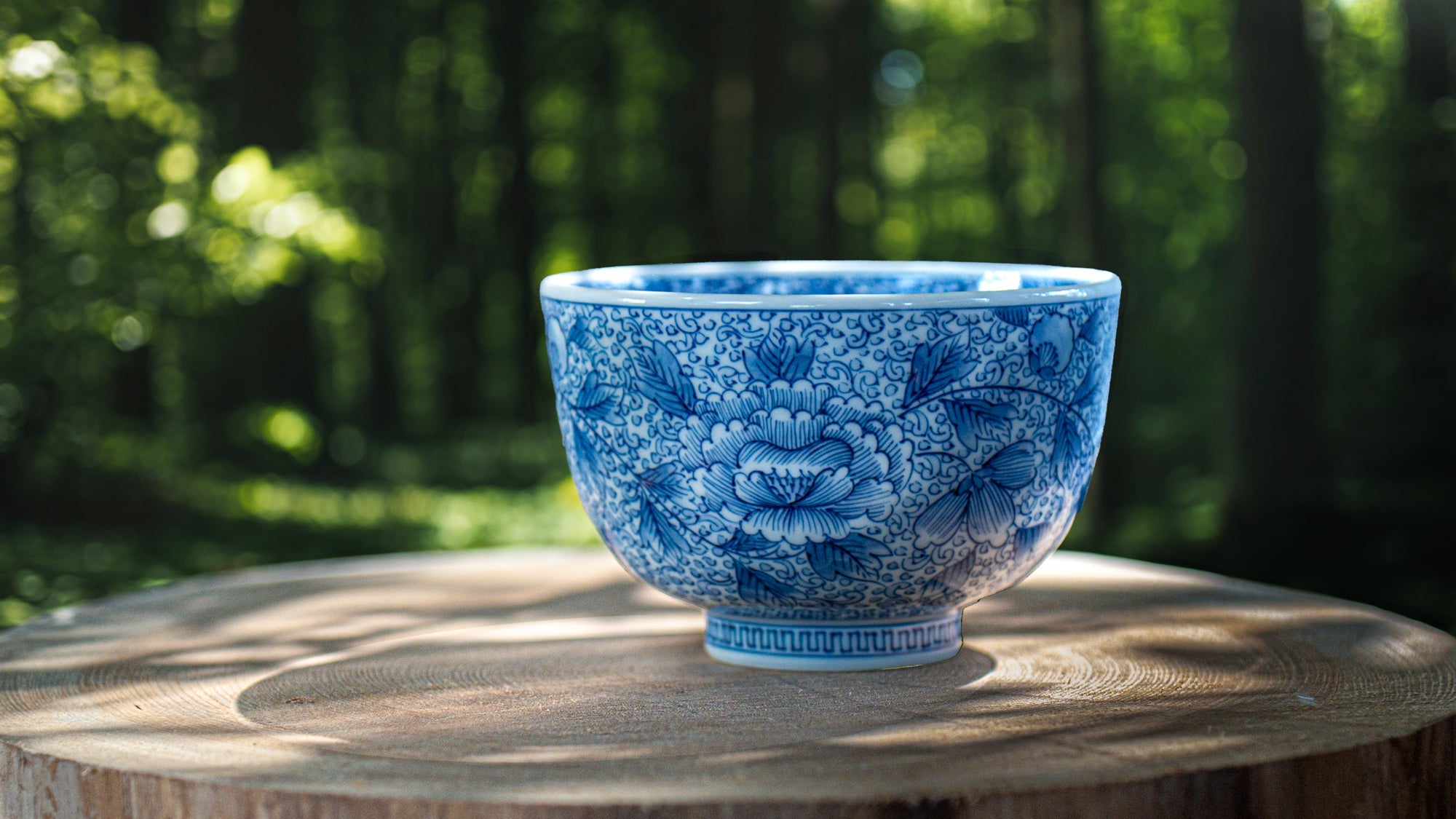
Crafts
Mikawachi-Keramik, auch Hirado-Keramik genannt, ist eine Keramik aus Sasebo, Präfektur Nagasaki, Japan. Bekannt für ihr durchscheinend weißes Porzellan, erfreute sie sich während des Trends zu japanischem Kunsthandwerk im Westen im 20. Jahrhundert großer Beliebtheit in Europa. Mikawachi-Keramik zeichnet sich durch filigrane Modelliertechniken aus, die die Grenzen von Porzellan erweitern, wie beispielsweise durchbrochene und Reliefschnitzereien, und durch ihre wunderschöne Bemalung, die wie ein einziges Kunstwerk wirkt.
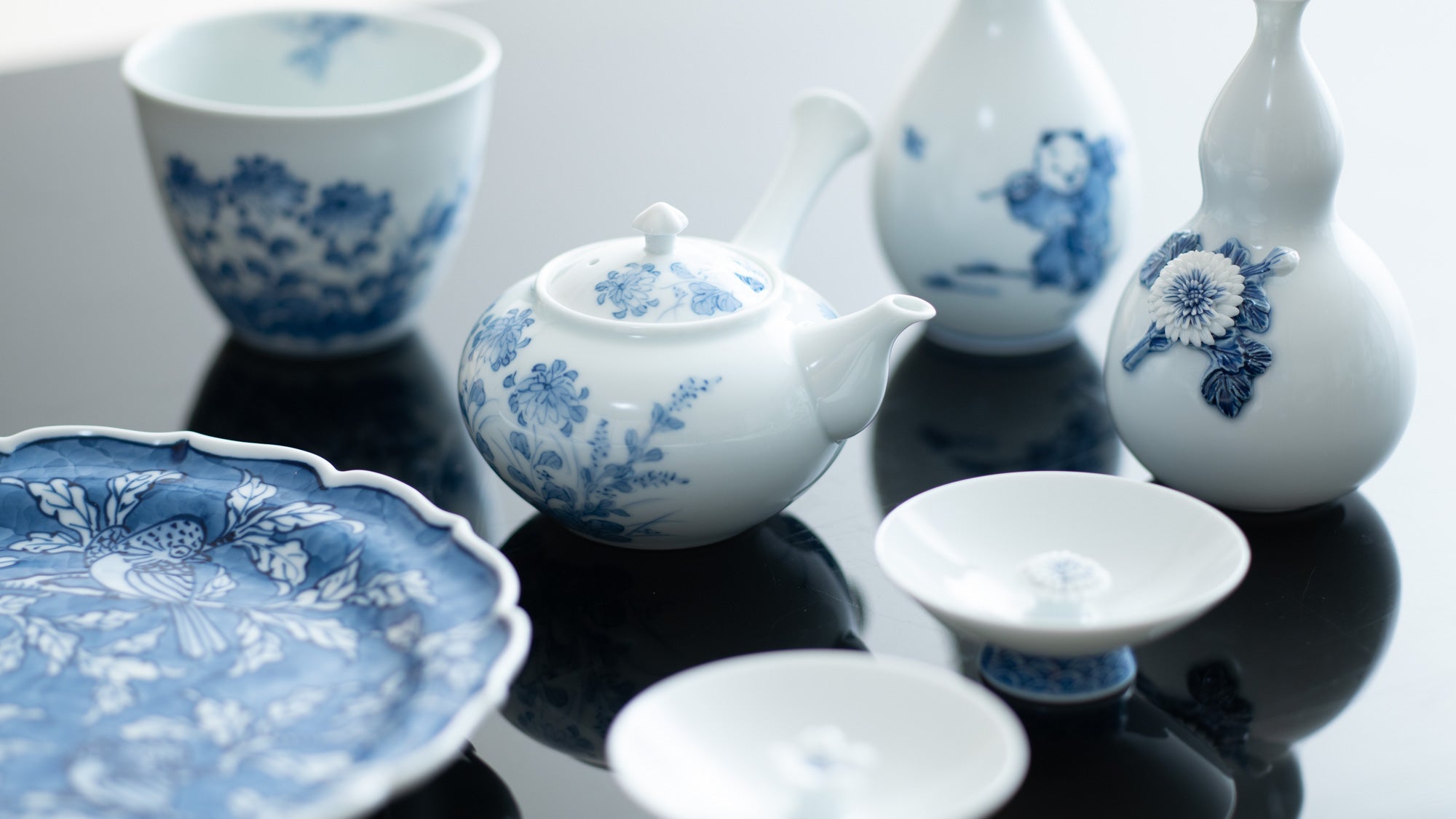
Optionen auswählen
About Artist
Musubi-Galerie
Seit seiner Gründung Musubi Kiln hat sich zum Ziel gesetzt, der Welt die feinsten traditionellen Handwerkskünste von Meistern aus ganz Japan vorzustellen.
Hier in der Galerie präsentieren wir Ihnen die höchste Stufe traditioneller Techniken, die über Generationen weitergegeben wurden. Entdecken Sie Werke von Meistern, die diese Methoden nicht nur perfektioniert, sondern mit ihrer Fantasie das Handwerk noch weiter verbessert haben.
Einige dieser Meister wurden sogar zu „Lebenden Nationalschätzen“ ernannt. Dieser Titel wurde ihnen von der japanischen Regierung verliehen, um ihren Beitrag zum Kunsthandwerk und zur Kultur offiziell anzuerkennen. Dadurch wurde ihr Erbe gefestigt und sie wurden zu einem wichtigen Teil der Kunstgeschichte.
Jedes Stück wird über viele Monate hinweg sorgfältig von Hand gefertigt, um einen zeitlosen Schatz zu schaffen, der seinesgleichen sucht. Und wenn es bei Ihnen zu Hause steht, werden auch Sie Teil dieser Geschichte.
Willkommen in der Galerie. Schauen Sie sich in Ruhe um.
